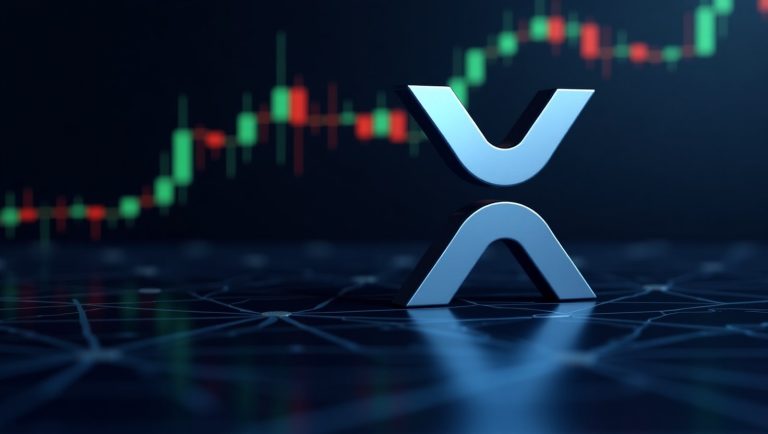On July 2, 2025, the cryptocurrency market is at a downtrend, struggling to regain its direction as most of the leading coins fail to have a direction. XRP, the native token of the Ripple network, remains one of them, and its performance over the last several months has attracted investors and analysts. With negative performance in 2022 and possible improvement in the past days, XRP is rising because of the clarity of its operations, the advancement of technology related to it, and an increasing presence of institutions. This 800-word article is a discussion of the latest news related to XRP, its on-market performance, and what fuels its future potential in the contemporary crypto scene.
Price Movement of XRP in 2025
XRP has also been experiencing a bad run in the year, with its price depreciating by about 20 percent in the year so far, and is currently trading at about 0.47. It is the same situation that cuts across the entire altcoin market, which has been shadowed by the dominance of Bitcoin, coupled with macroeconomic challenges. Yet, in recent weeks, XRP demonstrated some stamina and recorded minimal increases and the appearance of a box formation that indicates the possibility of a breakout. The technical analysts have traced a bullish ascending triangle on the daily chart, and XRP projects over important resistance levels of about 0.50.
Enhanced trading activity is also showing support for the current price activity, whereby both the retail and institutional markets exert interest. Should XRP manage to breach the resistance at $0.50, analysts believe it will have an upside of rising to $0.60 in the short term, and it can see even more gains should the market conditions improve. Nevertheless, the inability to maintain the price above $0.45 may result in XRP testing lower prices again, and the next several weeks will be crucial to the direction of this asset.
The Regulatory Uncertainty Finds A Solution
Among the most potent drivers of XRP in 2025 is the clearing of regulatory clouds that have been hovering since the creation of the effort. The company that owns XRP, Ripple, has achieved significant progress in its court struggles, especially against the U.S. Securities and Exchange Commission (SEC). The recent events have helped to confirm that XRP is not a security in various jurisdictions, and this adds more confidence to investors. This regulatory clarity has made XRP a safer bet on institutional adoption, more so in cross-border payment solutions, which is still the primary use case of Ripple.
The optimistic regulatory sentiment has resulted in a fair amount of speculation regarding the possibility of XRP being used in new types of financial products, including exchange-traded funds (ETFs). Although no special ETF representing XRP has been approved yet as of July 2, the fact that the Ethereum and Bitcoin ETFs performed has given some hope that the XRP might imitate it. This would be a major trend that would have a high influx of capital, which would go further in favor of XRP recovery in price.
Ripple’s Network Expansion and Partnerships
Ripple Working Cross-Border Ripple has been using its attention on cross-border payments to lay the groundwork for XRP. By 2025, Ripple will have scaled up its RippleNet platform, where it has partnered with some big financial institutions in Asia, Europe, and Latin America. These alliances exploit XRP in transferring money to different countries quickly and cheaply as a competitive model to the old system, SWIFT. Since the rising use of RippleNet, XRP transaction volume has grown, supporting its position in the global financial system.
Moreover, the On-Demand Liquidity (ODL) service offered by Ripple through the utilisation of the XRP as the bridge currency has recorded impressive growth. This facility enables financial institutions to make cross-border payments within a very short time, and it is more cost-effective. ODL growth in these emerging markets, especially in Southeast Asia, has also contributed to the real-world advantage of XRP, becoming an interesting investment in any portfolio of those who wager on the future of blockchain in global finance.
Dilemmas of the Volatile Market
Although it has been gaining in the recent past, there are some threats that might affect the performance of XRP in the short term. The general crypto market is still volatile, especially altcoins, which are quite sensitive to macroeconomic factors. The future economic statistics issued by the U.S., such as inflation figures and the possible Federal Reserve rate hikes, may turn into headwinds for XRP and the rest of the cryptocurrencies. The U.S. dollar could appreciate, or monetary policy could also be tightened in the near term to depress risk assets such as XRP.
In addition, the rivalry in the cross-border payment environment is on the increase. The competition in the market of blockchain networks is challenging the dominance of Ripple as other networks, like Stellar (XLM) or new Layer-1 protocols, compete to secure their share of the market. Although XRP has advantages due to the developed network of relationships and partners, Ripple should not stop innovating to keep up with the competition.
Communal Attitudes and Technology Advancements
This is because the XRP community, also known as the XRP Army, has been a force behind the strength of the token. The community present on platforms such as X has been active in supporting the initiatives of Ripple and avoiding the negative opinion toward it. Such a groundswell movement has contributed to keeping XRP interest going, even when the market is under a downtrend. Social media conversations relating to target prices, including reaching towards a $1 level again, are also gaining increased momentum, but analysts warn that it might take more substantial factors to drive the market.
Technically speaking, Ripple is also negotiating the improvement of the XRP Ledger in terms of scalability and interoperability. The most recent developments are introductions of smart contract functionality, which might be used to extend the application of XRP beyond payments. These trends are in line with the general shifts in the crypto industry as versatility and cross-industry connections are being highly regarded. Provided they are successful, such upgrades would result in more developers joining the XRP ecosystem and driving the long-term viability even higher.
The Future Outlook for July 2025 XRP
In the future, the outlook for XRP targets the month of July in 2025 and is promising, termed as cautiously optimistic. Based on the past results, it is reasonable to assume that July will also be a good month for cryptocurrencies, as on average, altcoins showed returns of approximately 7% during July. Technical configuration and the underlying strength of XRP make the coin well-positioned in the case of a rally. The resistance on $0.50 will also form a major battleground, and a successful breakout will most likely lead to the commencement of a widespread rise.
Investors are also following up on the continued progress of Ripple to establish itself on a world scale. New alliances or regulatory success may be instigators, which would lead to increased interest in XRP. Nevertheless, the performance of the wider market will contribute too much since the altcoins, such as XRP, are prone to replicate the path of Bitcoin in situations of high levels of correlation.
To round off, XRP is an emerging successful altcoin in the modern cryptocurrency world due to regulatory certainty, the fast-growing network, and an advocating community. Despite the needed improvements, it still faces obstacles, such as market volatility and competition, but XRP is one to keep an eye on in July 2025, considering its distinctive role in the sphere of cross-border payments. The XRP might be a front-runner of altcoins as Ripple keeps innovating and taking the position of high demand in the world market, which may provide investors with high chances of earning flourishing results in the cryptocurrency market in fusion.











 Bitcoin
Bitcoin  Ethereum
Ethereum  Tether
Tether  XRP
XRP  USDC
USDC  Lido Staked Ether
Lido Staked Ether  TRON
TRON  Cardano
Cardano  Avalanche
Avalanche  Toncoin
Toncoin  Solana
Solana